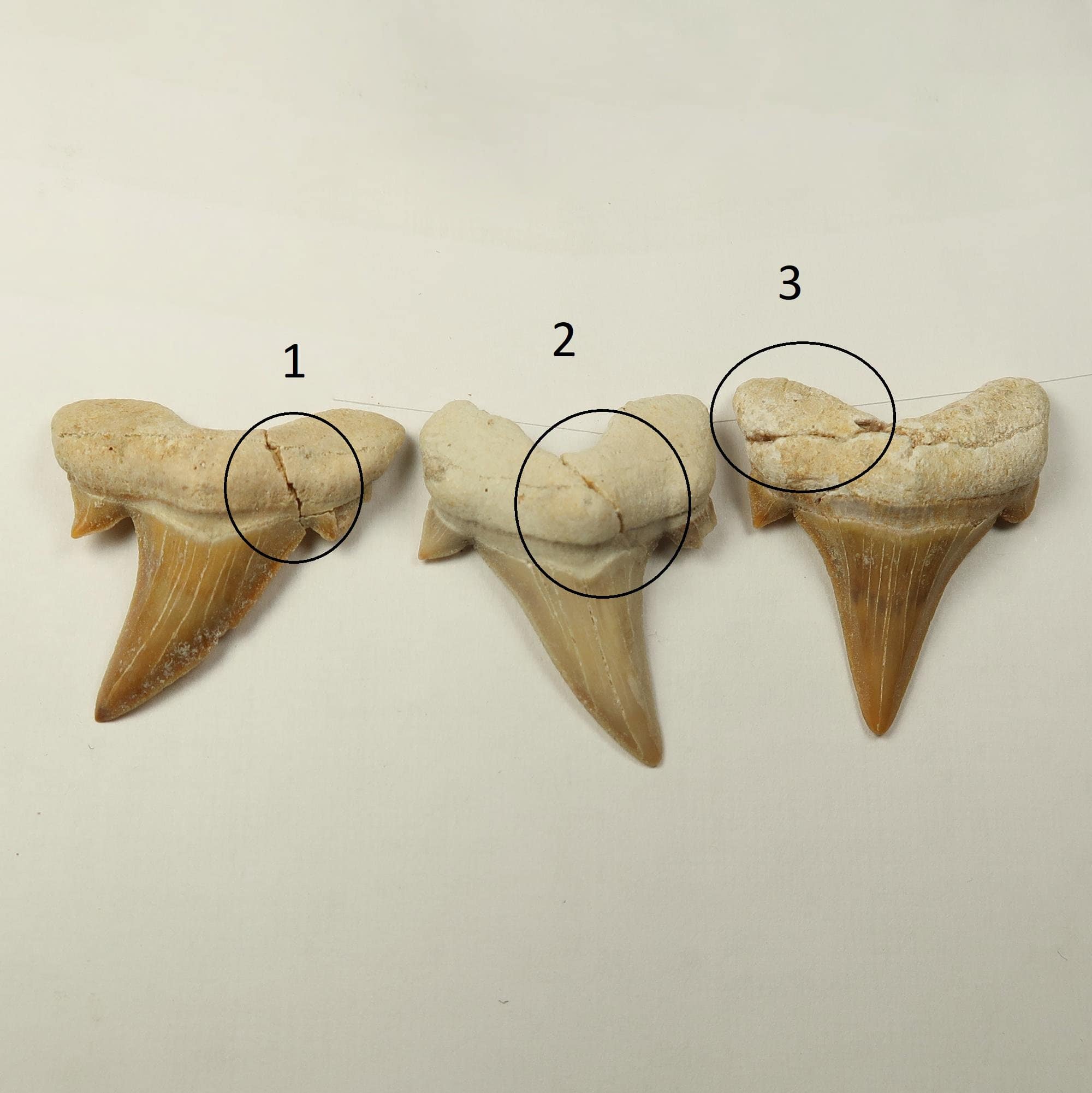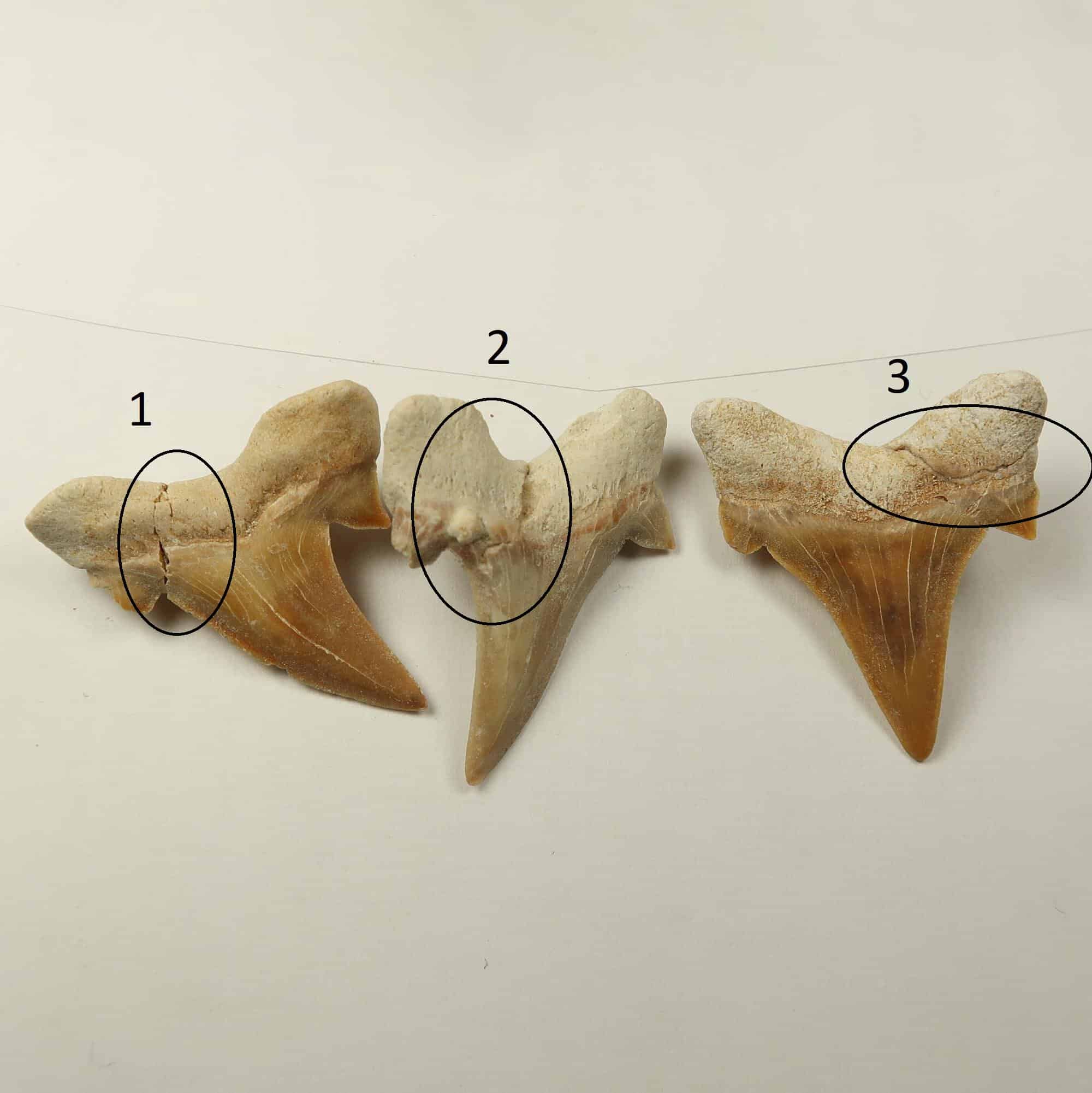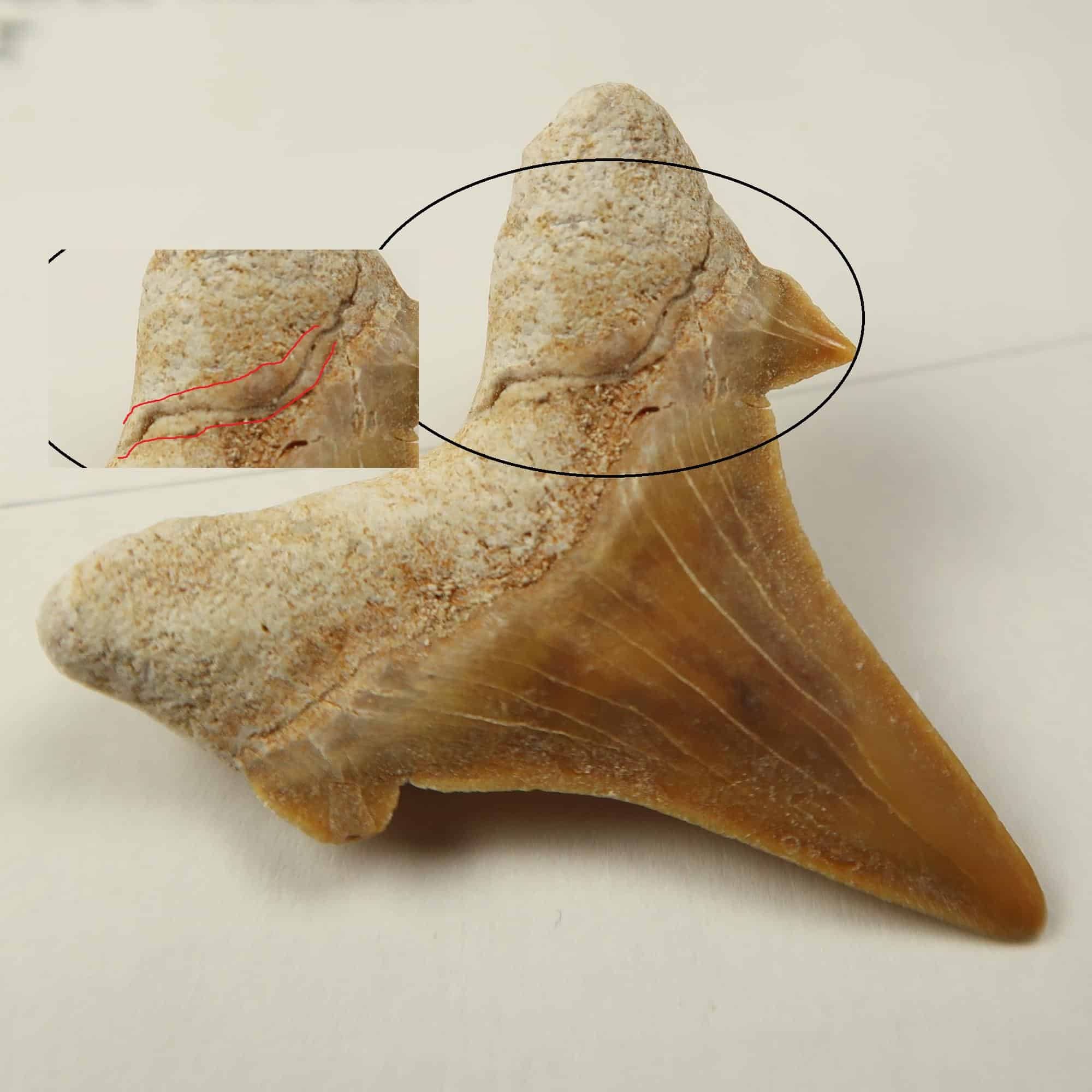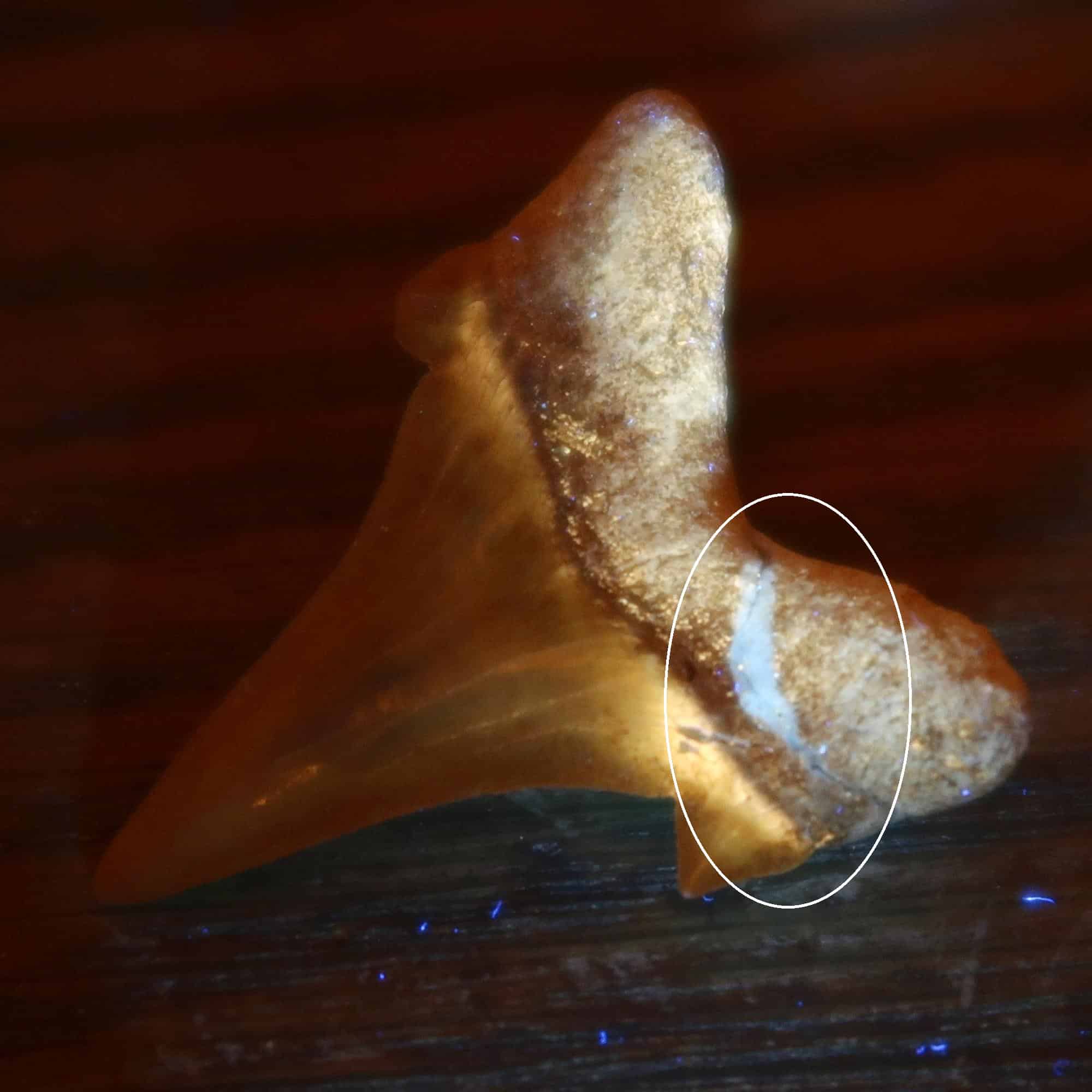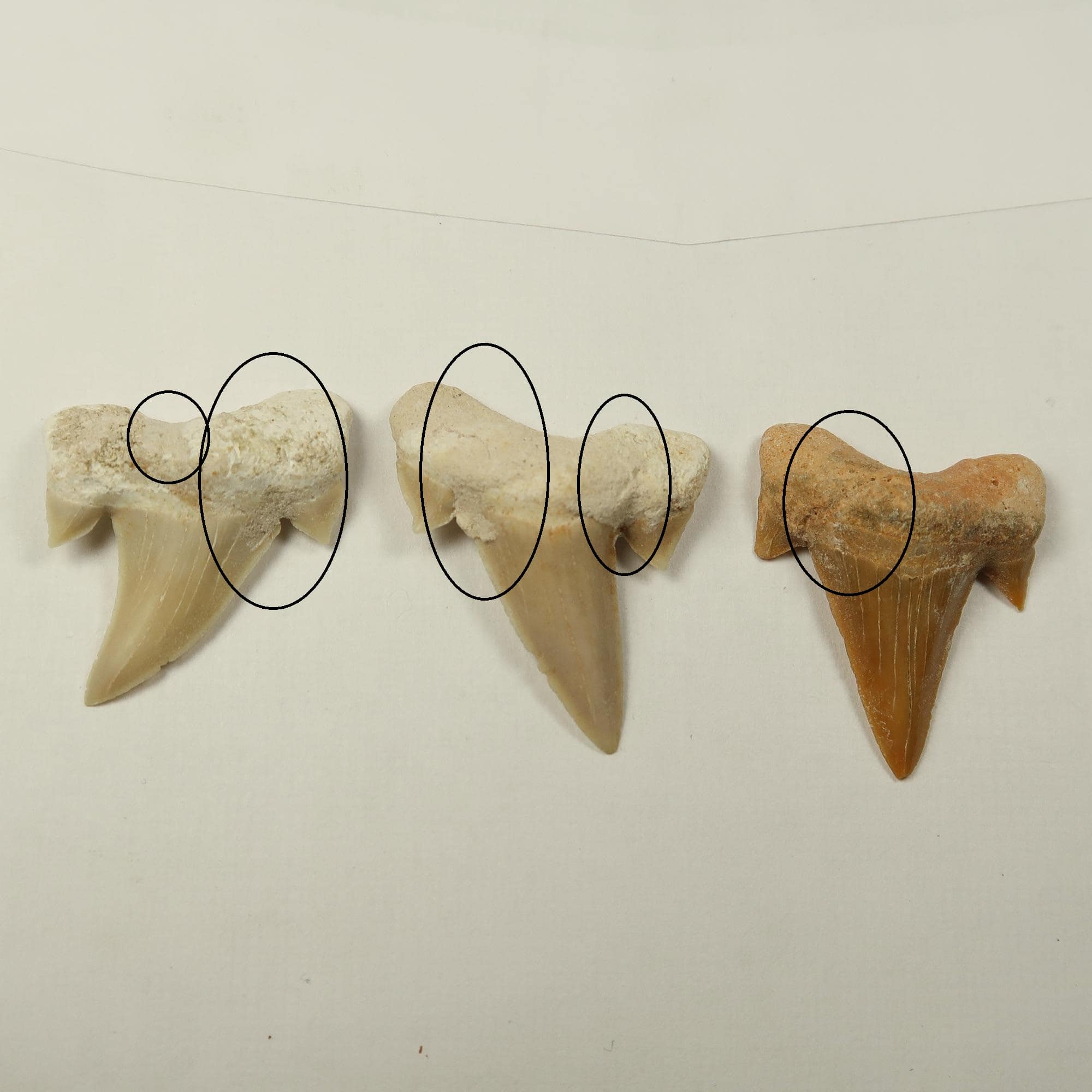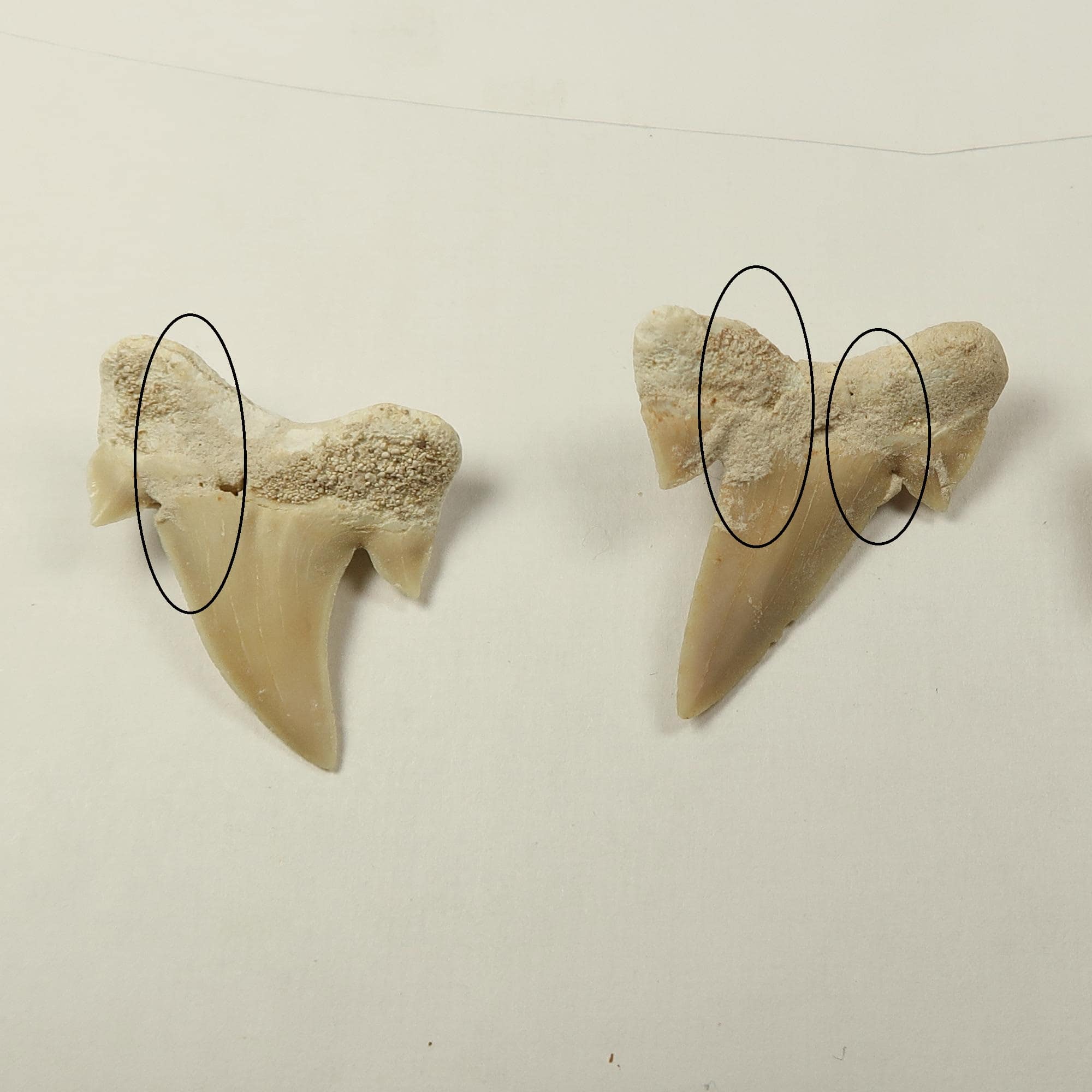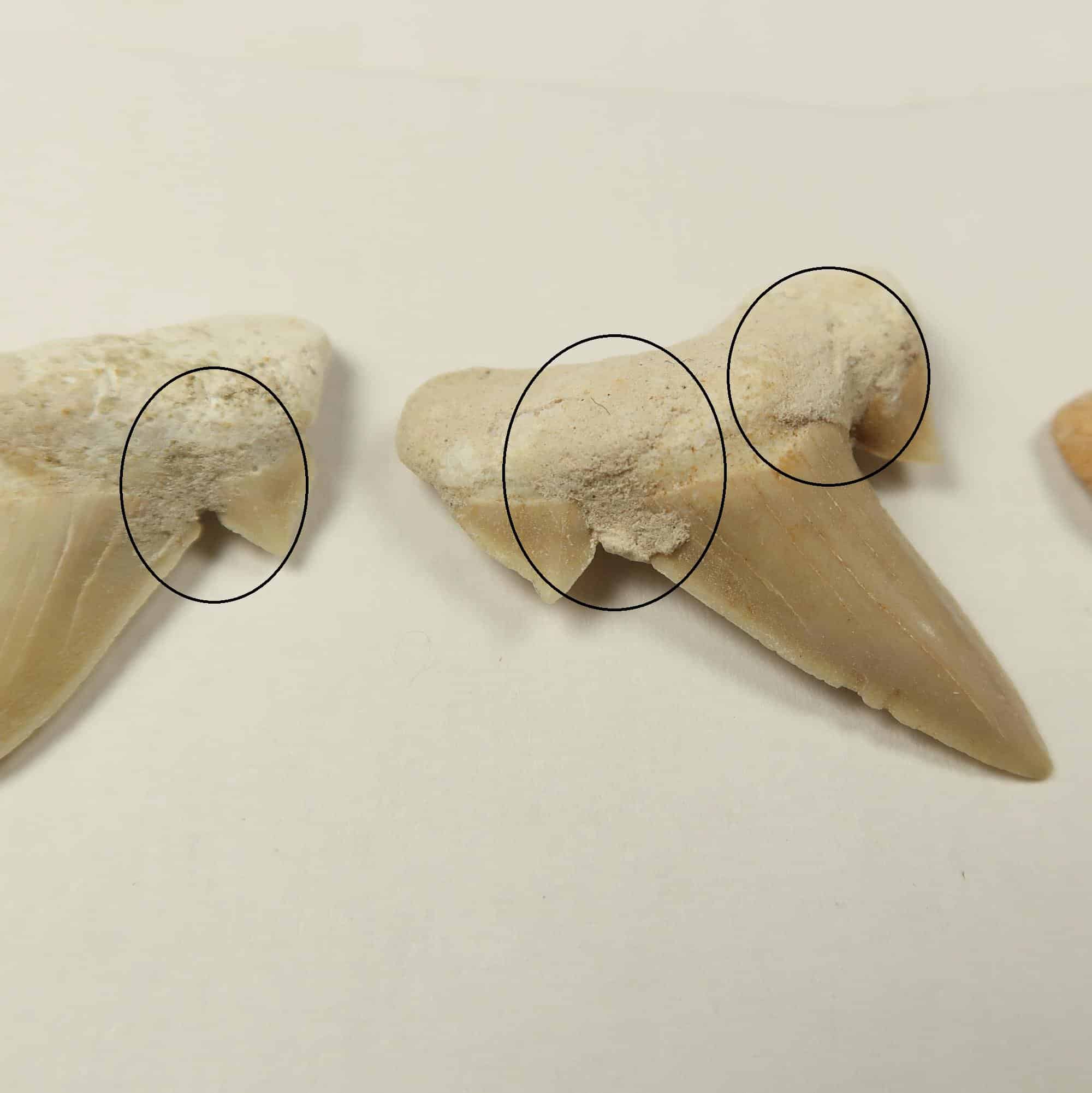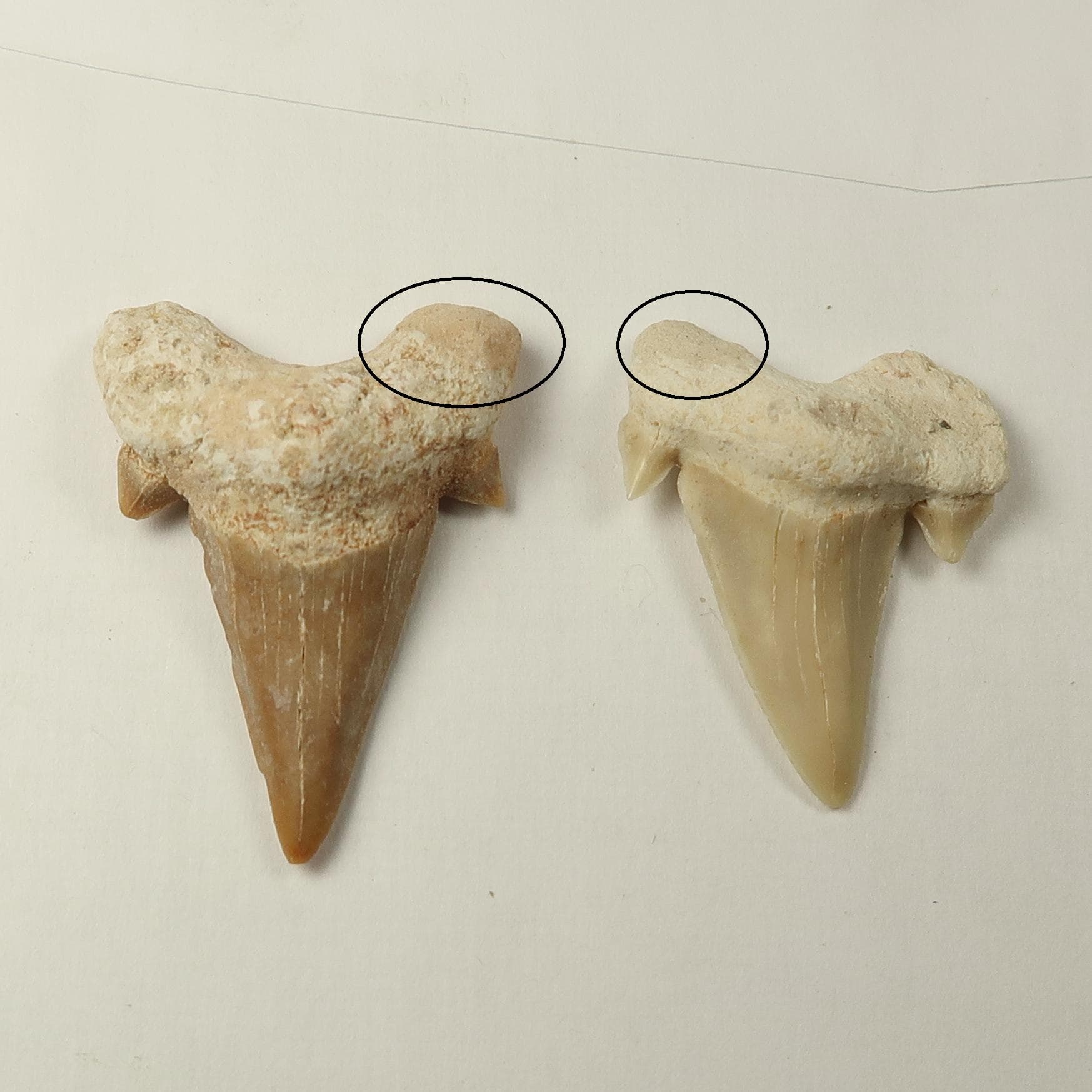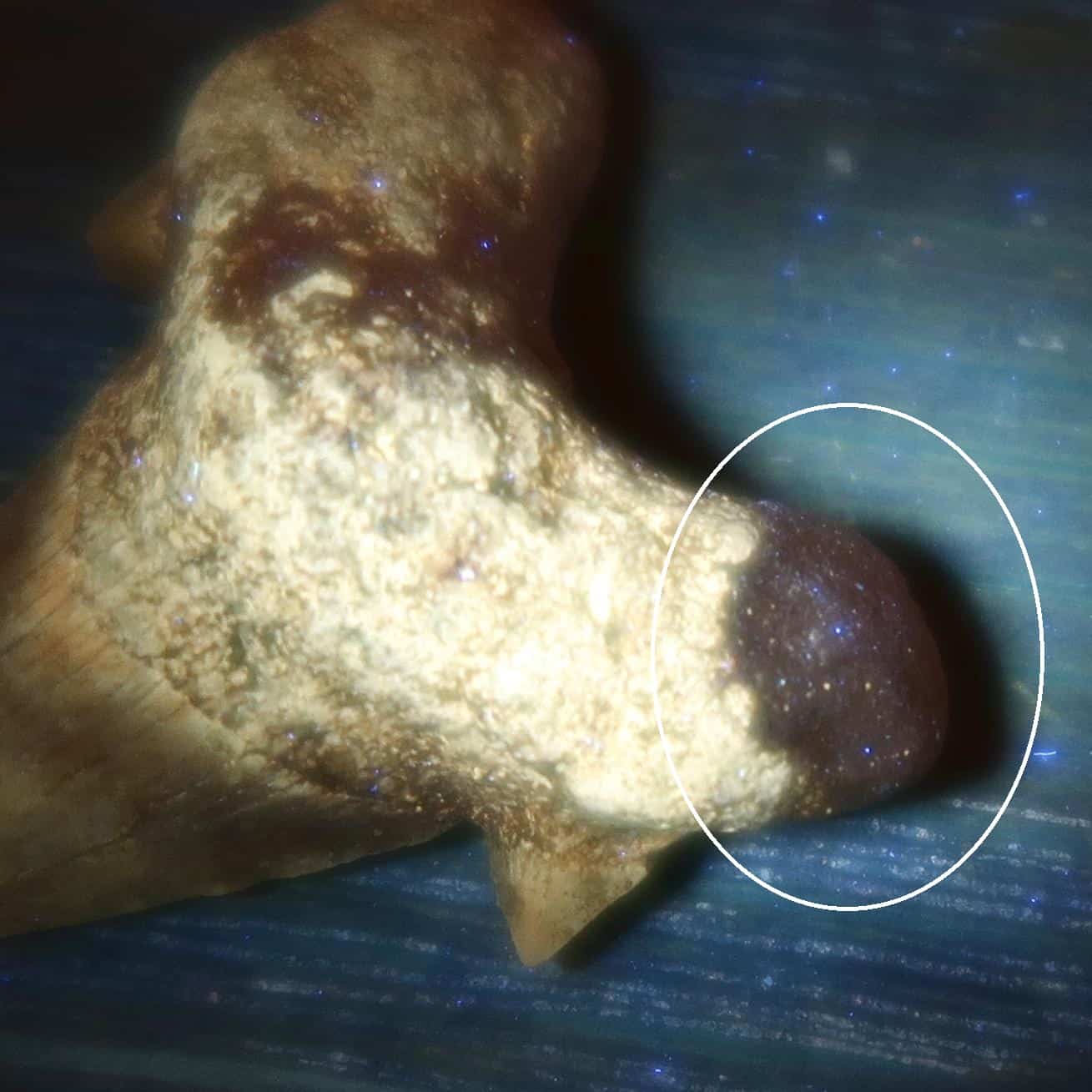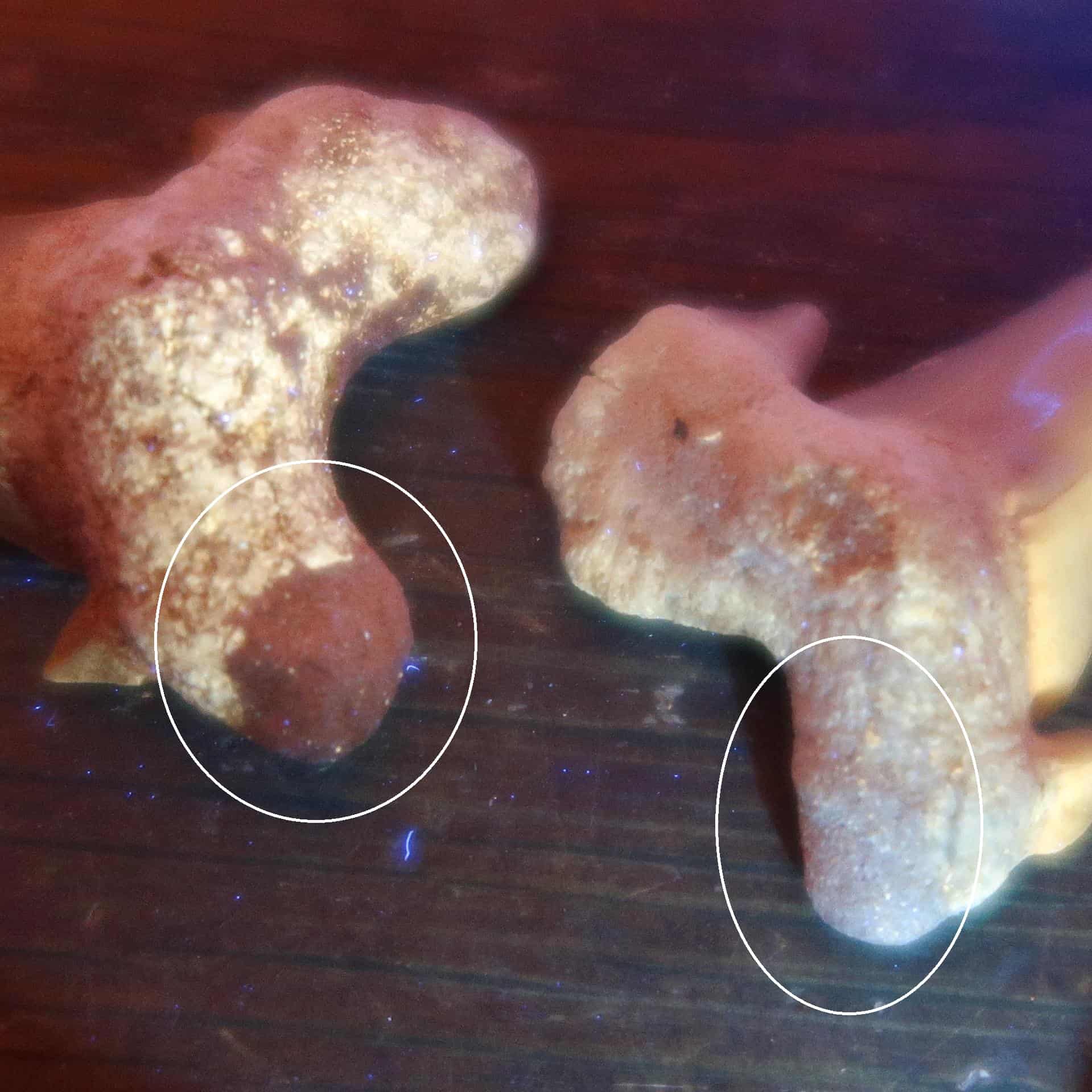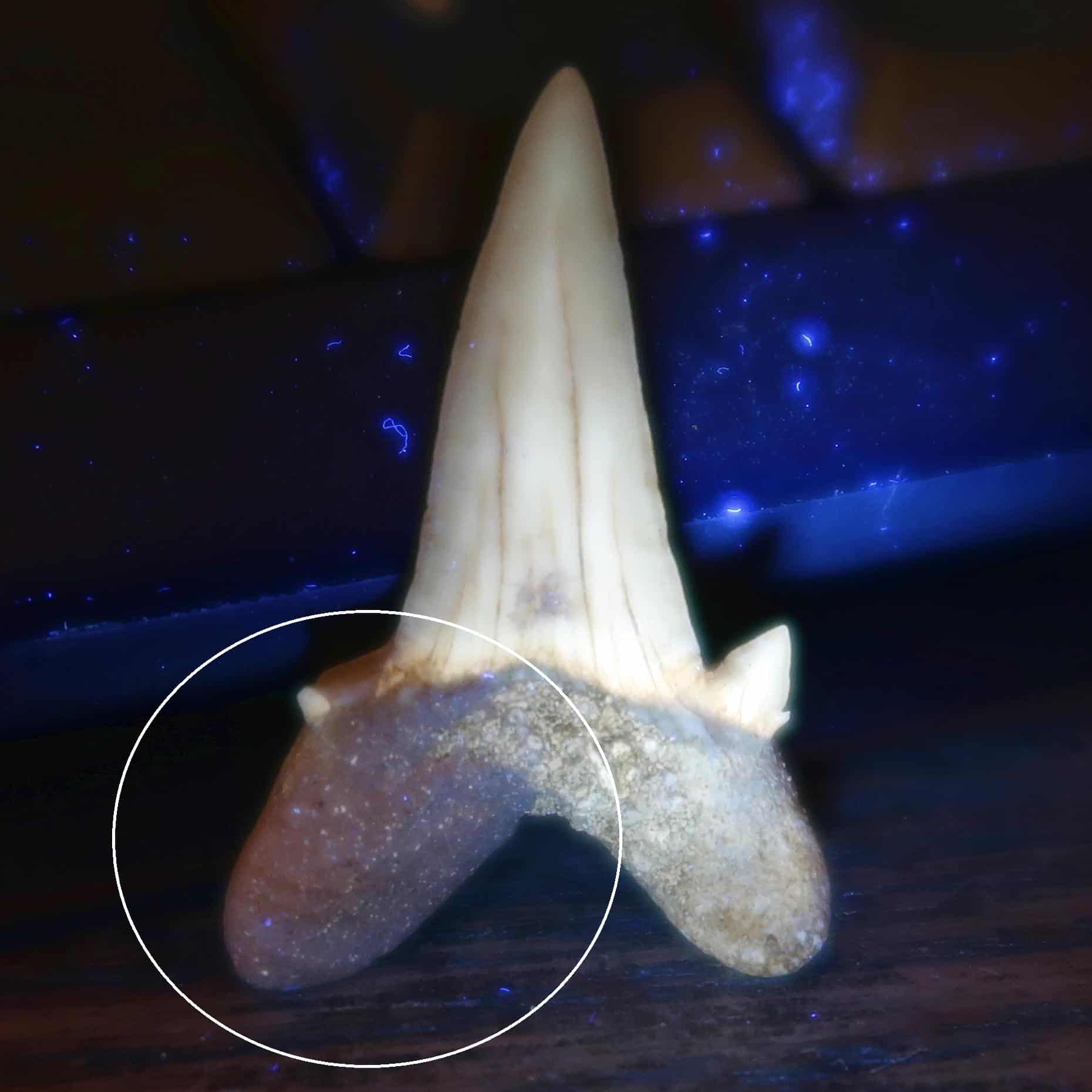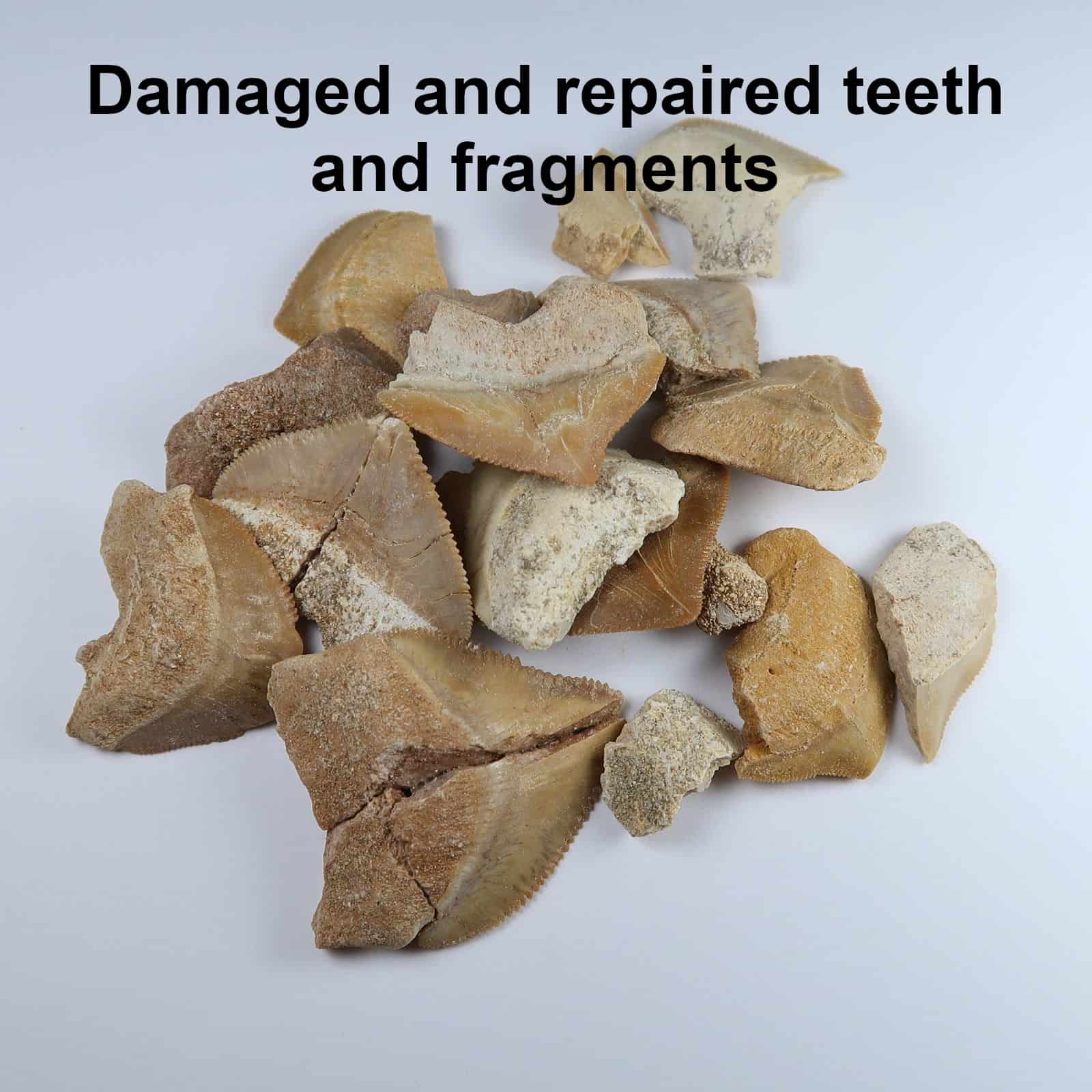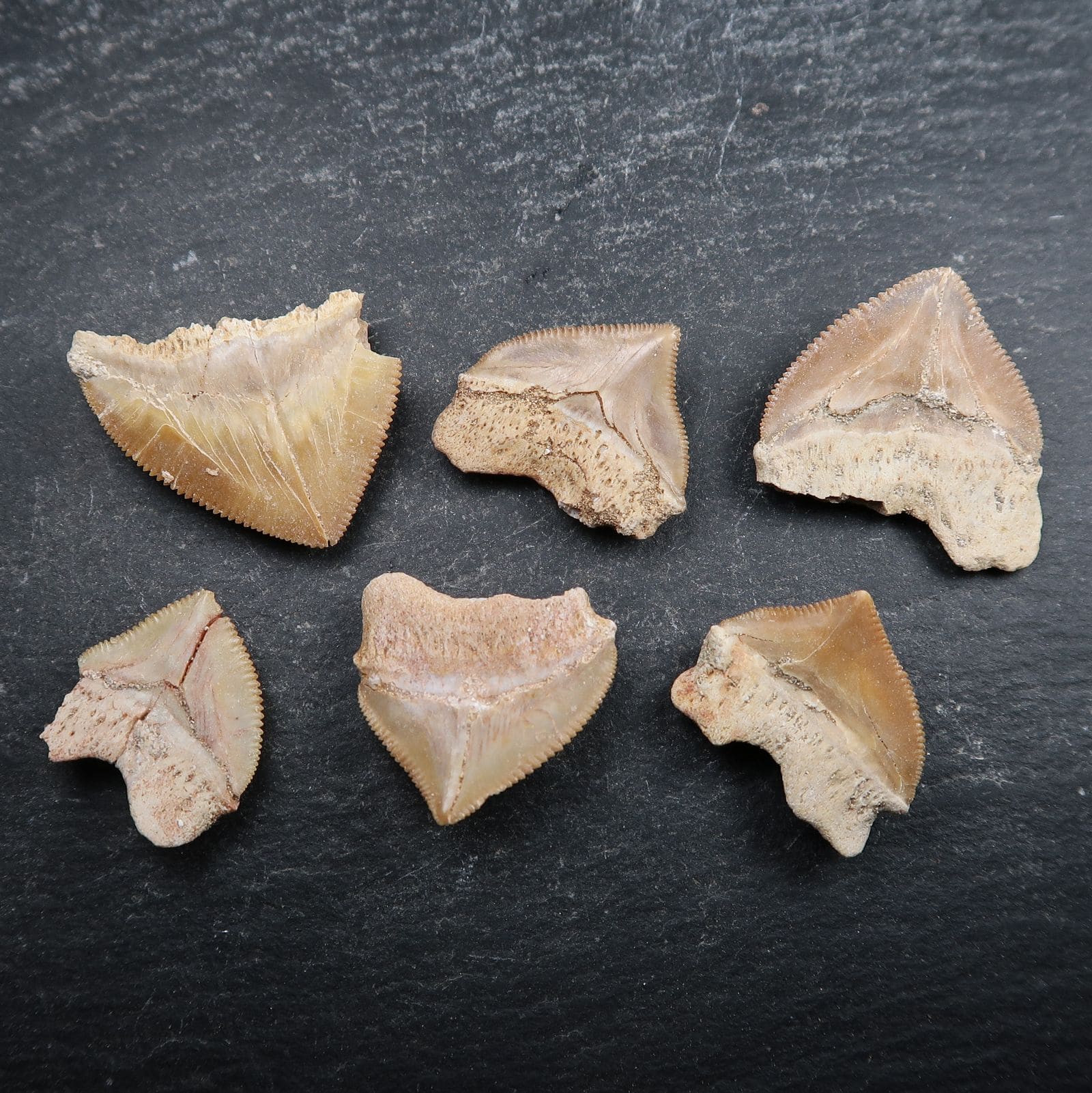A quick post showing a few common repairs to fossilised teeth – in this case, Otodus teeth from Morocco, which are commonly restored/repaired.
I have used Otodus teeth as an example here as I have a few hundred in stock to pick out some obviously repaired specimens.
There are repaired forms of -every- species of sharks tooth, Megalodon are commonly repaired from Indonesia – Meg teeth from Indonesia have quite soft, sandy roots which are often damaged upon extraction and obviously the prices will be higher for teeth that look complete!
Please click on any of the images in the post for a closer look.
Number 3 has been photographed closeup under longwave (365nm) ultraviolet light, which can be a useful tool in analysing repaired/fake fossils. You can see that the glue used in this repair is a completely different tone and colour to the surrounding tooth. Some glues, however, do not react under UV light.
Slightly more tricky to spot – the glue joint on these teeth has been coated with something like cement, in order to match the rough colour of the root of the tooth itself. This helps to cover up the crack in the tooth itself.
Fake and repaired roots – a slightly tricky thing to spot again.
These have been sculpted out of cement, modelling clay, or modelling clay mixed with sand, or something along those lines. Under UV light they appear a drastically different colour to the rest of the root.
Under regular light, they are not so obvious, especially to the novice collector.
Some other repaired sharks teeth – in the first two photos these are Squalicorax sp. Can you spot the repaired teeth? There’s a couple that might not be… 😉
Further reading:
- A great article on faked Megalodon teeth from Indonesia – https://www.darkwatermegs.com/megalodon-teeth-information/the-megalodon-repair-restoration-creation-situation/megalodon-repair-restoration-creation-situation.html
- A good photo of a disassembled Megalodon tooth, again from Indonesia – http://www.thefossilforum.com/index.php?/topic/113421-indonesian-meg-teeth/

